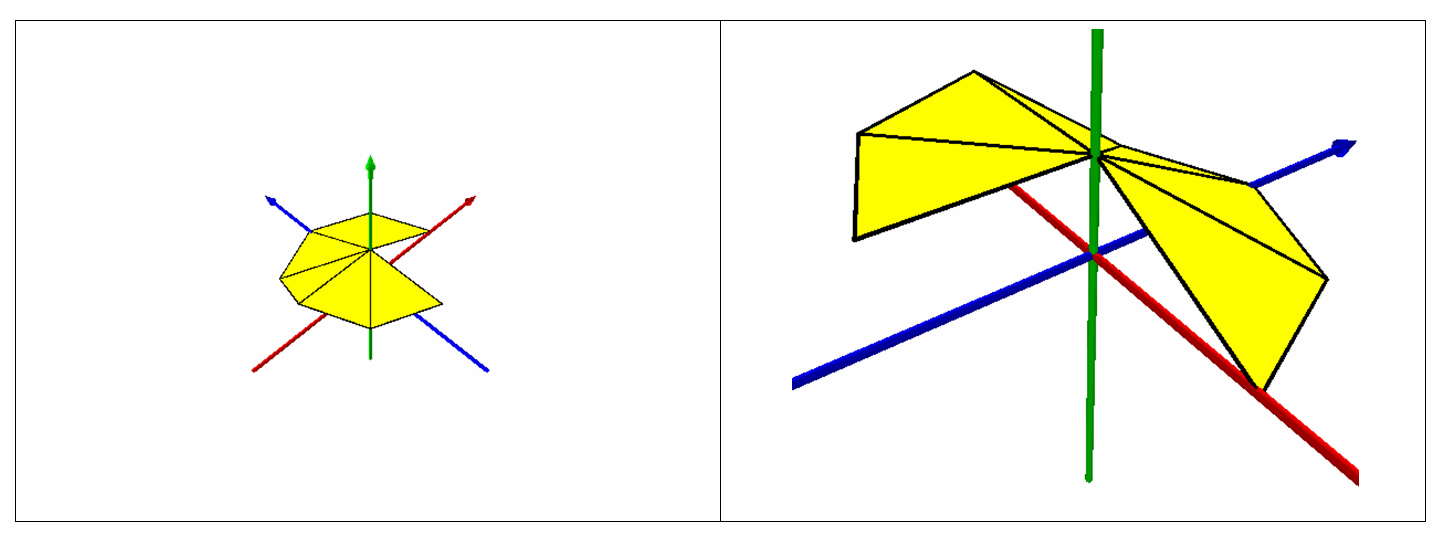 |
This document is archived and information here might be outdated. Recommended version. |
 |
This document is archived and information here might be outdated. Recommended version. |
| ArcObjects Help for .NET developers > ArcObjects namespaces > Geometry > ESRI.ArcGIS.Geometry > Classes > T > TriangleFan CoClass (ArcObjects .NET 10.5 SDK) |
A continuous 3D fan of triangles, where each triangle after the first shares an edge with the preceding triangle, and all triangles share a common pivot point.
Use the ISupportErrorInfo method InterfaceSupportsErrorInfo to determine if the object supports extended error information. If the object supports extended error info, VC++ developers should use the OLE/COM IErrorInfo interface to access the ErrorInfo object. Visual Basic developers should use the global error object Err to retrieve this extended error information.
| Interfaces | Description |
|---|---|
| IClone (esriSystem) | Provides access to members that control cloning of objects. |
| IGeometry | Provides access to members that describe properties and behavior of all geometric objects. |
| IGeometry2 | Provides access to members that extend the IGeometry interface with a more sophisticated projection method. |
| IGeometryCollection | Provides access to members that can be used for accessing, adding and removing individual geometries of a multi-part geometry (Multipoint, Polyline, Polygon, MultiPatch, and GeometryBag). |
| IMAware | Indicator interface that identifies geometric objects that can have persistent M values attached to their vertices. |
| IPointCollection | Provides access to members that manipulate the points of a Multipoint, Path, Ring, Polyline, Polygon, TriangleFan, TriangleStrip, or MultiPatch. |
| IPointCollection3 | Provides access to members that manipulate the points of a Multipoint. |
| IPointCollection4 | Provides access to members that manipulate the points of a Multipoint, Path, Ring, Polyline, Polygon, TriangleFan, TriangleStrip, or MultiPatch. |
| IPointIDAware | Indicator interface that identifies geometries that can have persistent point ID values attached to coordinates. |
| ISupportErrorInfo | Indicates whether a specific interface can return Automation error objects. |
| ITransform2D | Provides access to methods for transforming geometries using either specific parameters or arbitrary transformation objects (affine transformations, geographic transformations, etc.). |
| ITransform3D | Provides access to methods for transforming 3D geometries using either specific parameters or arbitrary transformation objects. |
| ITriangleFan | Indicator interface that identifies a triangle fan. |
| IXMLSerialize (esriSystem) | Provides access to members that XML serialize and deserialize an object to/from XML. |
| IZAware | Indicator interface that identifies geometries that can have persistent Z values attached to their vertices. |

private static object _missing = Type.Missing;
public static IGeometry GetTriangleFanGeometry()
{
//TriangleFan: Partial Fan, Two Levels Of Zs
IPointCollection triangleFanPointCollection = new TriangleFanClass();
triangleFanPointCollection.AddPoint(
ConstructPoint3D(0, 0, 3),
ref _missing, ref _missing
);
triangleFanPointCollection.AddPoint(
ConstructPoint3D(0, -6, 3),
ref _missing, ref _missing
);
triangleFanPointCollection.AddPoint(
ConstructPoint3D(-3 * Math.Sqrt(2), -3 * Math.Sqrt(2), 3),
ref _missing, ref _missing
);
triangleFanPointCollection.AddPoint(
ConstructPoint3D(-6, 0, 3),
ref _missing, ref _missing
);
triangleFanPointCollection.AddPoint(
ConstructPoint3D(-3 * Math.Sqrt(2), 3 * Math.Sqrt(2), 0),
ref _missing, ref _missing
);
triangleFanPointCollection.AddPoint(
ConstructPoint3D(0, 6, 0),
ref _missing, ref _missing
);
triangleFanPointCollection.AddPoint(
ConstructPoint3D(3 * Math.Sqrt(2), 3 * Math.Sqrt(2), 0),
ref _missing, ref _missing
);
triangleFanPointCollection.AddPoint(
ConstructPoint3D(6, 0, 0),
ref _missing, ref _missing
);
return triangleFanPointCollection as IGeometry;
}
private static IPoint ConstructPoint3D(double x, double y, double z)
{
IPoint point=ConstructPoint2D(x, y);
point.Z=z;
return point;
}
private static IPoint ConstructPoint2D(double x, double y)
{
IPoint point = new PointClass();
point.PutCoords(x, y);
return point;
}